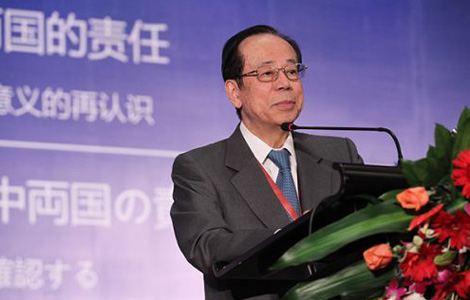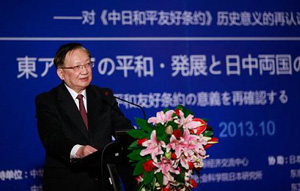Science has bigger say in GM food
Updated: 2013-10-29 07:18
By Shenggen Fan (China Daily USA)
|
||||||||
Whether genetically modified foods can help eradicate food insecurity and poverty has been the subject of contentious and polarizing debate.
The backdrop to this debate is a global agricultural system that is facing increasing challenges from rising climatic variability, population growth, urbanization, and natural resource depletion. According to the Food and Agriculture Organization, food production needs to increase by 60 percent by 2050 in order to feed 9 billion plus people. Scientists and policymakers alike are searching for innovative ways to ensure sufficient access to nutritious food, today and for generations to come. Unlike previous science-based initiatives to raise productivity in the agricultural sector (such as the Green Revolution), the potential of GM crops to combat food security and poverty challenges is muddled in hotly contested discussions.
The considerable expansion of GM crop varieties worldwide over the last two decades is indisputable. The total area devoted to GM crops has increased 100-fold from 1.7 million hectares in 1996 to 170 million hectares in 2012. Developing countries now grow more GM crops than developed countries (in terms of area), largely driven by Brazil's recent fast-paced adoption of GM crops. China is home to approximately 4 percent of the total global area devoted to GM crops. Soybeans, maize, cotton, and canola dominate GM crops globally, whereas China's focus is on cotton, papaya, and poplar.
To date, a wide body of (peer-reviewed) scientific impact studies shows that commercially-available GM crops are safe for people and the environment. According to a 2010 review of the safety of GM crops by the European Union, "the main conclusion to be drawn from the efforts of more than 130 research projects, covering a period of more than 25 years of research, and involving more than 500 independent research groups, is that biotechnology, and in particular GMOs, are not per se more risky than, for example, conventional plant breeding technologies." Other international and national scientific bodies, such as the World Health Organization, have reached the same conclusion.
The documented impacts of GM crops point to many productivity, environmental, and socio-economic benefits among large- and small-scale farmers alike. Genetic engineering can boost yields by developing plant varieties that have increased resistance to stresses such as disease, pests, and droughts, lower fertilizer and water application, and higher nutritional quality.
A recent book by the International Food Policy Research Institute looked at past impact studies and found that GM crops in developing countries were associated with economic advantages for adopting smallholder farmers by reducing pest damage and insecticide use and increasing yields.
On average, the impact was larger in developing countries than developed countries, but profits varied widely across and within countries. What does this mean for food security? For example, evidence from South Africa shows that the yield advantage of planting GM maize (compared to conventional varieties) results in approximately 36 more days of maize meal for small-scale farmers annually because farmers did not have to purchase (more expensive) store-bought maize.
GM crops present a promising opportunity to meet global food demand in a sustainable manner. In order to take advantage of this opportunity, GM technologies need to be developed in an environment that focuses on biosafety regulations, smallholder farmers, and communication.
Biosafety regulations are needed to ensure that activities surrounding agricultural biotechnologies are socially and environmentally responsible, maximizing benefits and minimizing potential risks. A well-balanced and transparent regulatory system should strike a balance between promoting innovation and ensuring the safety of consumers and the environment. Developing countries need to build their capacity to design and implement policy and regulatory frameworks alongside monitoring and evaluation systems. This must be done without regulatory uncertainties, delays, and excessive restrictions, all of which act as barriers to innovative technological developments.
The public and private sector need to work together to increase investments in agricultural research and development with a focus on GM technologies that have low adoption barriers and are suitable for smallholder farmers. A majority of the developing world's food is produced on half of a billion small farms (less than 2 hectares). China is home to a large portion of these small farms (193 million); in fact, 95 percent of all farms in China are smaller than 2 hectares. Institutional innovations are required to promote the use of these new technologies among smallholders, including financial (for example, mobile phone-based payment services and financial/non-financial service bundles) and extension services, risk management mechanisms (for example, weather-based index insurance), and institutional arrangements (for example, collective branding and producer cooperatives).
Researchers and policymakers should also improve their communication strategy vis-a-vis the general public, encouraging participation and debate among stakeholders. The results of M&E activities should be effectively communicated with consumers through a variety of accessible platforms in a transparent manner to create an enabling environment for the development and dissemination of GM foods. This deliberate approach to encourage participation and debate should cover all stages of the decision- making process, from product research and development to product approval and introduction.
Going forward, no technological innovation should be excluded in the search for solutions to feed more than 9 billion people by 2050, provided that it is grounded in a transparent system of checks and balance that respects the well-being of consumers and producers (especially smallholder farmers) alongside the environment.
The author is director general of International Food Policy Research Institute.
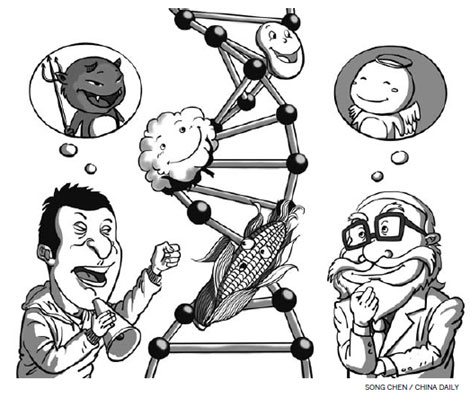
(China Daily USA 10/29/2013 page12)

 Ellis Island reopens for 1st time since Sandy
Ellis Island reopens for 1st time since Sandy ABC apologizes for 'Kimmel' joke
ABC apologizes for 'Kimmel' joke Lang Lang named UN Messenger of Peace
Lang Lang named UN Messenger of Peace
 Snowfall hits many areas of Tibet
Snowfall hits many areas of Tibet  Antiquated ideas source of Abe strategy
Antiquated ideas source of Abe strategy
 Storm wrecks havoc in S Britain, leaving 4 dead
Storm wrecks havoc in S Britain, leaving 4 dead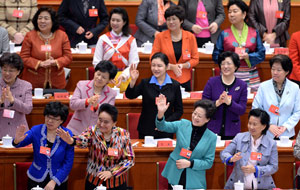
 Women's congress aims to close income gap, lift status
Women's congress aims to close income gap, lift status
 Sao Paulo Fashion Week held in Brazil
Sao Paulo Fashion Week held in Brazil
Most Viewed
Editor's Picks

|

|

|

|
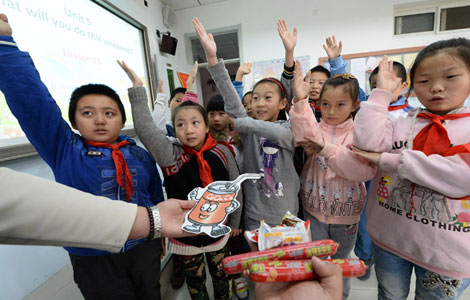
|

|
Today's Top News
Hawaii debates over gay marriage legalization
Kerry urges Iran to show nuke program peaceful
Albright counsels fact not myth in relations
Is Obama's lack of transparency really his fault?
San Diego Symphony debuts at Carnegie
Lang Lang takes on UN `Messenger of Peace’ role
Fonterra botulism scare laid bare in board inquiry
At 72, China's 'Liberace' still wows fans
US Weekly

|

|
